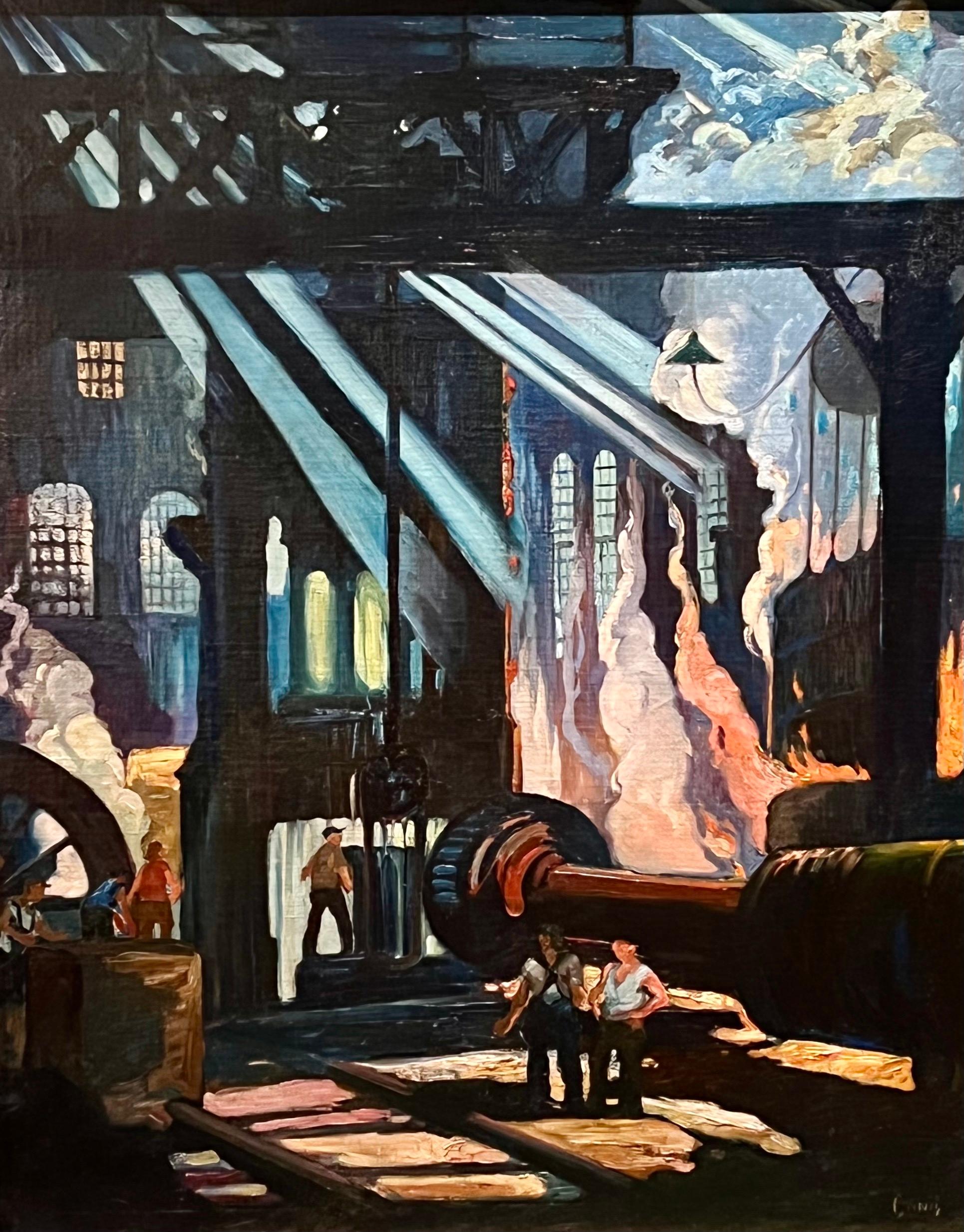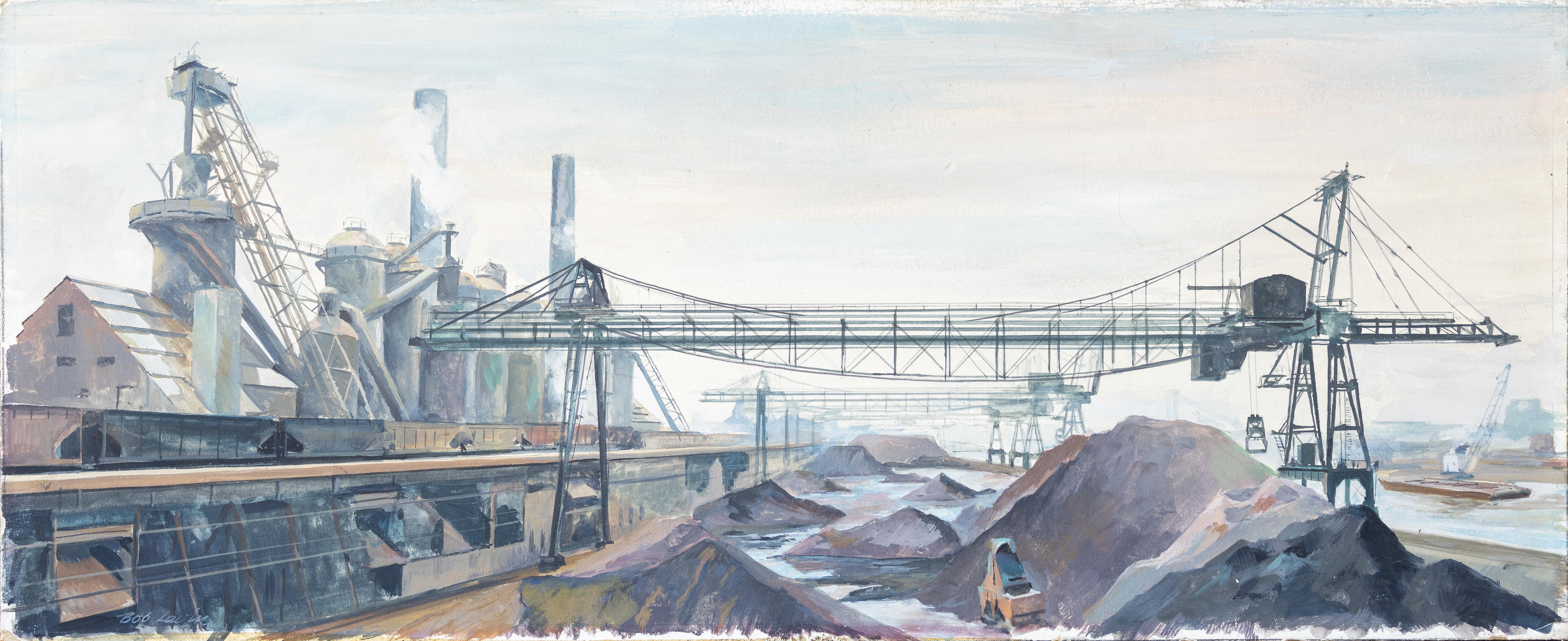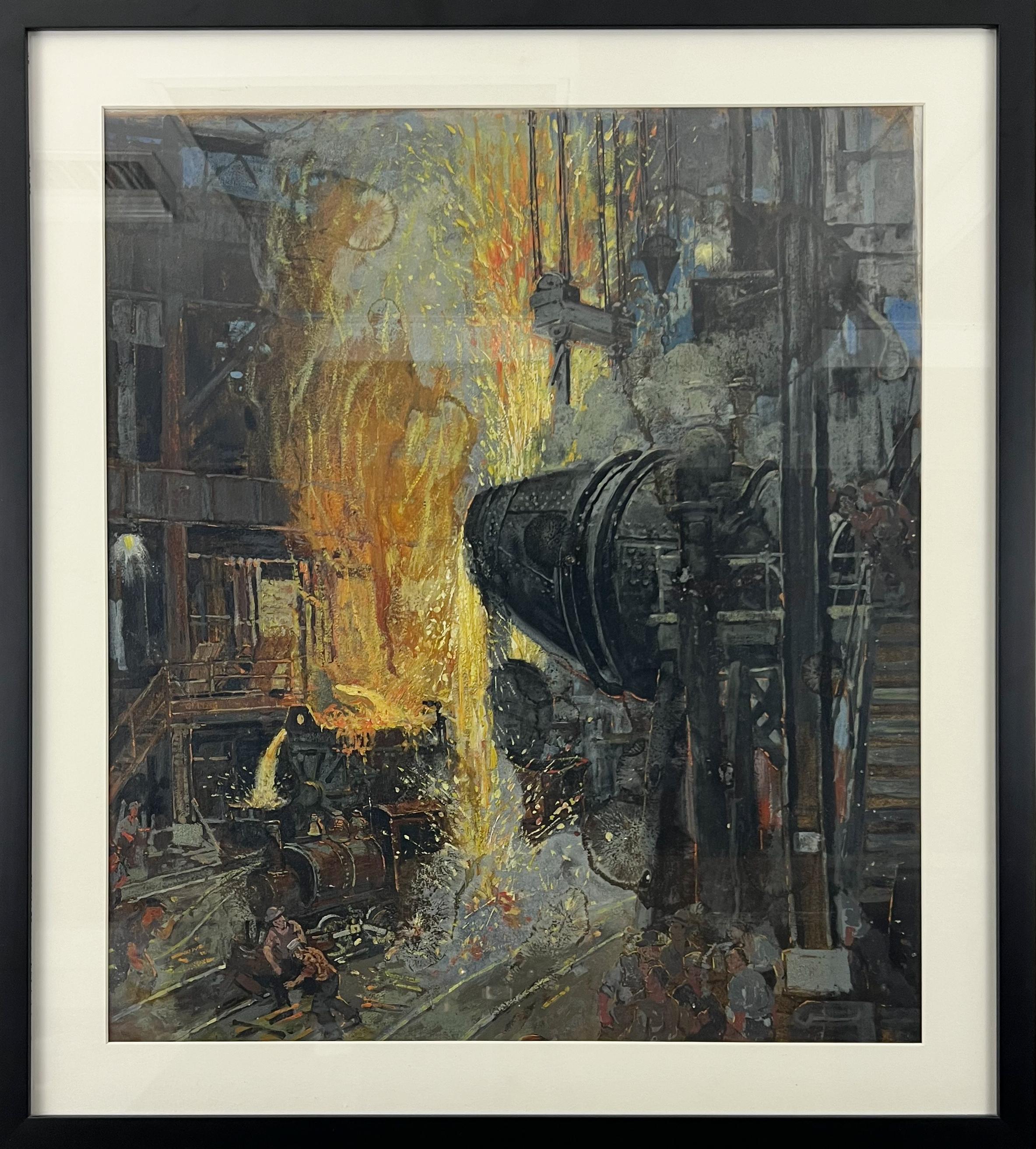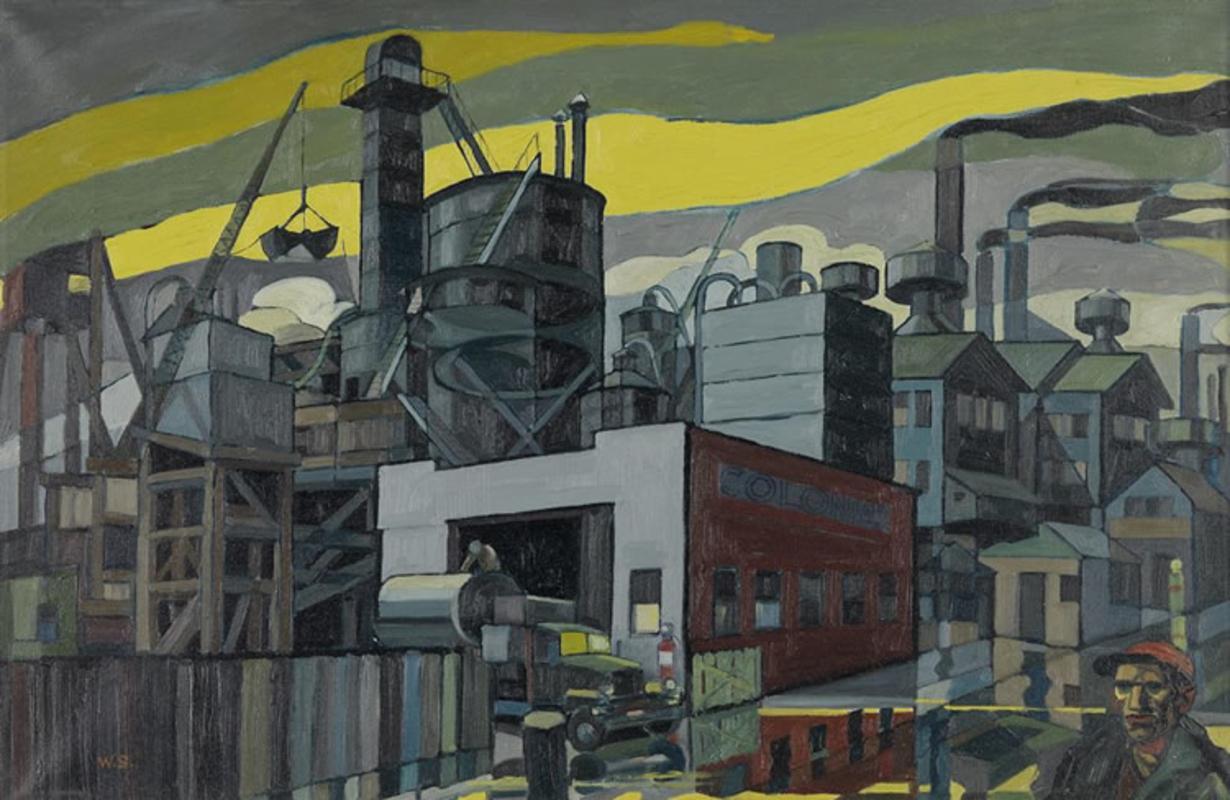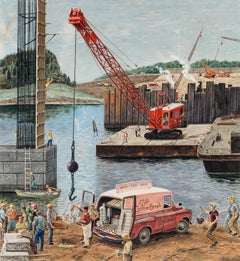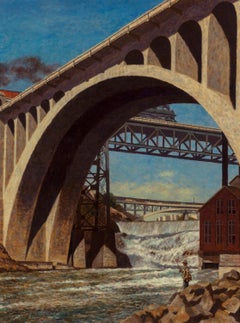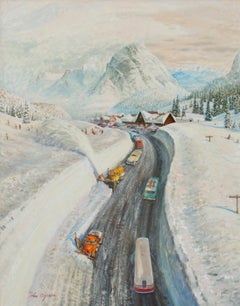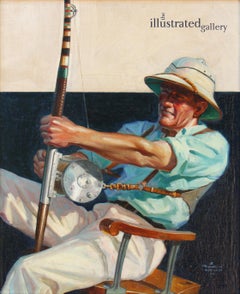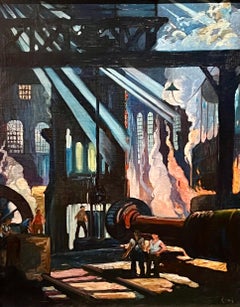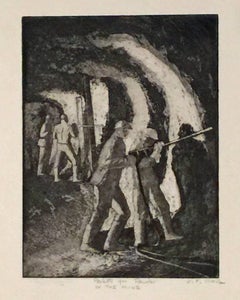Items Similar to Mining for Ore, Saturday Evening Post Cover, 1947
Want more images or videos?
Request additional images or videos from the seller
1 of 6
John AthertonMining for Ore, Saturday Evening Post Cover, 19471947
1947
$44,000
£33,085
€38,256.43
CA$62,096.15
A$67,377.45
CHF 35,742.48
MX$827,389.73
NOK 442,018.36
SEK 418,590.87
DKK 285,568.34
About the Item
Medium: Oil Painting
Signature: Signed Lower Left
Contact for exact dimensions.
Saturday Evening Post Cover, November 22, 1947
- Creator:John Atherton (1899 - 1972, American)
- Creation Year:1947
- Dimensions:Height: 21 in (53.34 cm)Width: 20 in (50.8 cm)
- Medium:
- Period:
- Condition:
- Gallery Location:Fort Washington, PA
- Reference Number:Seller: 40691stDibs: LU38436262062
About the Seller
5.0
Recognized Seller
These prestigious sellers are industry leaders and represent the highest echelon for item quality and design.
Platinum Seller
Premium sellers with a 4.7+ rating and 24-hour response times
Established in 1995
1stDibs seller since 2016
135 sales on 1stDibs
Typical response time: 1 hour
- ShippingRetrieving quote...Shipping from: Fort Washington, PA
- Return Policy
Authenticity Guarantee
In the unlikely event there’s an issue with an item’s authenticity, contact us within 1 year for a full refund. DetailsMoney-Back Guarantee
If your item is not as described, is damaged in transit, or does not arrive, contact us within 7 days for a full refund. Details24-Hour Cancellation
You have a 24-hour grace period in which to reconsider your purchase, with no questions asked.Vetted Professional Sellers
Our world-class sellers must adhere to strict standards for service and quality, maintaining the integrity of our listings.Price-Match Guarantee
If you find that a seller listed the same item for a lower price elsewhere, we’ll match it.Trusted Global Delivery
Our best-in-class carrier network provides specialized shipping options worldwide, including custom delivery.More From This Seller
View AllCoffee Break, Saturday Evening Post cover
By Benjamin Prins
Located in Fort Washington, PA
Medium: Gouache on Board
Signature: Signed Lower Left
Sight Size 29.00" x 26.00;" Framed 38.50" x 35.00"
Framed under glass.
Original cover illustration for The Saturday Evening Po...
Category
1950s Other Art Style Figurative Paintings
Materials
Gouache, Board
Monroe Street Bridge, Saturday Evening Post cover, June 12, 1948
Located in Fort Washington, PA
In this iconic Saturday Evening Post cover, the artist paints himself as the solitary fisherman underneath a Monroe Street Bridge in Spokane, Washington....
Category
1940s Landscape Paintings
Materials
Canvas, Oil
Clearing the Snow, Saturday Evening Post Cover
By John Ford Clymer
Located in Fort Washington, PA
Cover of The Saturday Evening Post Magazine, February 6, 1960
Caption: "The Cover: Artist John Clymer takes you to the summit of Washington state's Snoqualimie Pass, where they seem to have had a few snow flurries lately. Up there the moist westerly winds bump against sky-reaching peaks of the Cascade Range, with the result that the winds spill their contents before whistling dryly on down across the eastern slopes. Thus residents of places like Seattle living in a relatively balmy clime beside the Pacific's mild Japan current, can drive in an hour or two up to where skiing material is sometimes twenty feet thick if it's an inch. Indeed, when seasons overlap, a downlander might conceivably pick a rose and go skiing with it in his buttonhole. All of which, thanks to highway crews who blow off the blizzards, is a very felicitous geographic arrangement."
John Ford Clymer's success as an artist can be traced to his boyhood in the Kittitas Valley located in the central regions of Washington state. It was there that he developed an enthusiasm for the world around him and an abiding respect for historical accuracy. Over the years John Clymer received numerous awards and honors including the revered Prix de West in 1976, from the national Academy of Western Art. Other great achievements included both gold and silver metals for his oils and charcoal drawings from the Cowboy Artists of America, "Western Artist of the Year" from the National Wildlife Art Collectors Society, and both John and Doris were honored at the Ellensburg National Art Show and Auction for their contributions to western heritage. John's highest honor came in 1988 when he was awarded the prestigious Rungius Medal from the Wildlife of American West Art...
Category
1950s Other Art Style Paintings
Materials
Board, Oil
Deep Sea Fisherman, Saturday Evening Post Cover
By Edgar Franklin Wittmack
Located in Fort Washington, PA
Medium: Oil on Canvas
Signature: Signed Lower Right
Sight Size 28.00" x 23.00", Framed 34.00" x 29.00"
Cover of The Saturday Evening Post, February 2, 1935
Category
1930s Figurative Paintings
Materials
Canvas, Oil
"Valley of Ashes, " Story Illustration for the Saturday Evening Post
By Stevan Dohanos
Located in Fort Washington, PA
Medium: Oil on Canvas
Signature: Signed Lower Right
"Valley of Ashes" by William James Stevens Jr., and illustrated by Stevan Dohanos for the Saturday Evening Post, May 24, 1947.
Category
20th Century Figurative Paintings
Materials
Canvas, Oil
Who Made it an Issue of Six Shooters, (California Mine; Copper Sky)
By Frank Schoonover
Located in Fort Washington, PA
Medium: Oil on Canvas (on Board)
Signature: Signed Lower Left
Literature:
Reese, Lowell Otus, The Little Injun, Collier's Weekly, November 4, 1916, p. 13, illustrated. Schoonover,...
Category
1910s Figurative Paintings
Materials
Canvas, Oil
You May Also Like
Industrial Mid-20th Century WPA Modern Men Working American Scene Social Realism
Located in New York, NY
Industrial Mid-20th Century WPA Modern Men Working American Scene Social Realism
George Pearse Ennis (American, 1884-1936)
"Forging a Gun Tube #1...
Category
1910s American Modern Interior Paintings
Materials
Canvas, Oil
POCKETS FOR POWDER IN THE MINE
By Harry F. Mack
Located in Portland, ME
Mack, Harry F. POCKETS FOR POWDER IN THE MINE. Etching with aquatint, not dated, but circa 1930s. Titled and signed "H. F. Mack" in pencil. 7 7/8 x 6 inches (plate), 10 3/4 x 9 1/4 i...
Category
1930s Figurative Prints
Materials
Etching, Aquatint
Australian School 20th Century Oil - The Quarry
Located in Corsham, GB
A striking scene depicting construction workers in a quarry. A truck kicks up dust and it winds up a dirt track before a vast landscape. The artist captures the scene in a warm palet...
Category
20th Century Landscape Paintings
Materials
Oil
$364 Sale Price
20% Off
"Shipyard" Realist Industrial Landscape
By Robert Lavin
Located in Austin, TX
This painting is a 20th century realist landscape depiction of a shipyard by Robert Lavin. The piece is executed in oil on board and measures 10" x 24".
Robert Lavin was born in New York City. His education included Townsend Harris, a prep school in New York followed by college at City College of New York. He also attended the National Academy of Art, where he studied as a painter. Studying the social realists of the 1930’s, Lavin, a former Marine pilot, portrayed steelworkers, roughnecks and trainmen. Lavin often painted his “proletarian ballets”- as one critic called them – to illustrate magazine advertisements.
The Smithsonian Institution and other museums collected Lavin’s original paintings, which portrayed the laboring subjects with dignity and integrity. Lavin also illustrated stock certificates and books. Paper Money magazine praised him as “one of the greatest vignette artists of the 20th century.” In addition to this, Lavin was for a number of years an Associate Professor of Art at City College of New York, a position he left in the mid ‘60’s in order to devote himself full time to his painting. His commissions took him around the world, from the North Sea to the coast of Africa, from the slopes of Alaska to the Sea of Japan. As part of a series for Gulf Oil, he painted the royal family of England for the opening of a new refinery in Wales. Another portrait of one of the early Americanastronauts, appeared on the cover of Time Magazine. Other major commissions during these years included Readers Digest books...
Category
20th Century American Realist Landscape Paintings
Materials
Oil, Board
Price Upon Request
Illustration of Scrapper O'Doon, Saturday Evening Post Steel Mill
By Henry Soulen
Located in Marco Island, FL
Illustrated in the July 22, 1922 Saturday Evening Post, page 22, entitled "Scrapper O"Doon", about a steel mill, written by R.G. Kirk.
Henry James Soulen (1888-1965) was a distingui...
Category
1920s American Realist Interior Paintings
Materials
Board, Oil
"Colonial Sand and Stone Company, New York, " Industrial WPA Scene, Precisionist
By William Sharp
Located in New York, NY
William Sharp (1900 - 1961)
Factory on the River
Oil on canvas
20 1/2 x 28 1/2 inches
Initialed lower left: WS
Provenance:
Estate of the artist
Private Collection, New York
Swann Auction Galleries, American Art, June 13, 2019, Lot 178
Private Collection, New York
Colonial Sand and Stone Co., founded by Generoso Pope, was once the country’s largest sand and gravel business, providing the concrete for much of New York City’s skyline, including the Empire State Building, Rockefeller Center, Radio City Music Hall, airports and subways.
William Sharp was born on June 13, 1900, in Lemberg, Austria, where he attended college and the Academy for Arts and Industry. He later studied in Kraków, Poland, and in Berlin and Munich, Germany. Sharp began his career as a designer of stained-glass windows and as a painter of murals. He served in the German army during World War I. After the war he became a newspaper artist in Berlin and a well-known etcher.
Sharp drew political cartoons that were bitterly critical of the growing Nazi movement. As the influence of National Socialism intensified, he began to contribute drawings, under a pseudonym, to publications that were hostile to Hitler. After Hitler assumed power, Sharp was confronted with these drawings and told that he would be sent to a concentration camp. However, in 1934, he escaped to the United States.
His first newspaper assignment in America was making courtroom sketches for The New York Mirror...
Category
Mid-20th Century American Realist Landscape Paintings
Materials
Canvas, Paint, Oil
More Ways To Browse
Orion Art
Ocean Horizon Painting
Oil Painting Budapest
Oil Painting By Stanley
Oil Painting Hamburg
Oil Painting Italy Coast
Oil Painting New Orleans
Oil Paintings Of Doors
Oil Paintings Storm Clouds
Oil West Texas
Original Fairy Painting
Painting Men Working
Painting Of Santa Maria
Paintings By Cortes
Paintings Of Aspens
Paintings With Moonlight
Peter Bayer
Rob Browning Painting
